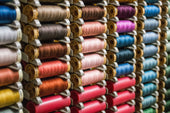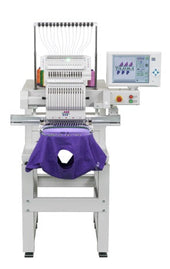How to read a sewing pattern
Pattern making is an important skill in your development as a sewer. Reading a sewing pattern can be overwhelming when doing it for the first time, or the nth time for that matter. Instructions, or lack thereof, can be confusing but once you’ve cracked the code you’ll have taken a giant leap forward in your sewing journey. We’ve put together an easy-to-read guide to reading a sewing pattern with some tips and tricks along the way.
What is a sewing pattern?
Let’s start at the beginning, a sewing pattern is an instructional guide involving a set of 2D pieces drawn on paper to help you assemble fabric into clothing. It has all the pieces outlined for you to use in order to ensure all your shaping and sizings are correct
How do I read a sewing pattern?
When working from a sewing pattern, it is imperative to use every part of the pattern. These guides often have information on the package and instructions inside, alongside pattern symbols and the actual pattern.
On the back of the pattern, you will find all the relevant information on the materials. Which fabric should you use? How much do you need? What are the measurements? Measurements are more important than ‘size’ as sizing may be different with various brands. The full pattern will include vital information such as details of the pattern, cutting and marking, layouts, alternations, symbols, and images.
Once you have grown more accustomed to using sewing patterns, you may wish to start adapting them to suit your own needs. If you opt to switch the fabric type for another, make sure you know exactly how they differ as this may have a knock-on effect with other aspects, such as measurements.
Types of sewing patterns
There are commonly two types of sewing patterns; paper and PDF. Paper patterns are simpler as the pattern is already printed onto a large sheet of paper and you can reuse these if you stencil the pattern rather than cut it out. PDF patterns require you to print at home. From these printouts, you would have to arrange your sheets and stick them together to give you the desired pattern in the accurate sizing. A little more tricky than a pre-printed paper pattern.
With this quick guide, we hope you are now 1, 2 or 3 steps ahead in your sewing pattern journey. Now it’s time to dive in at the deep end and get started. Look out for more tips and guides with Sewingtime, and for all your sewing needs and accessories, head to our website.



